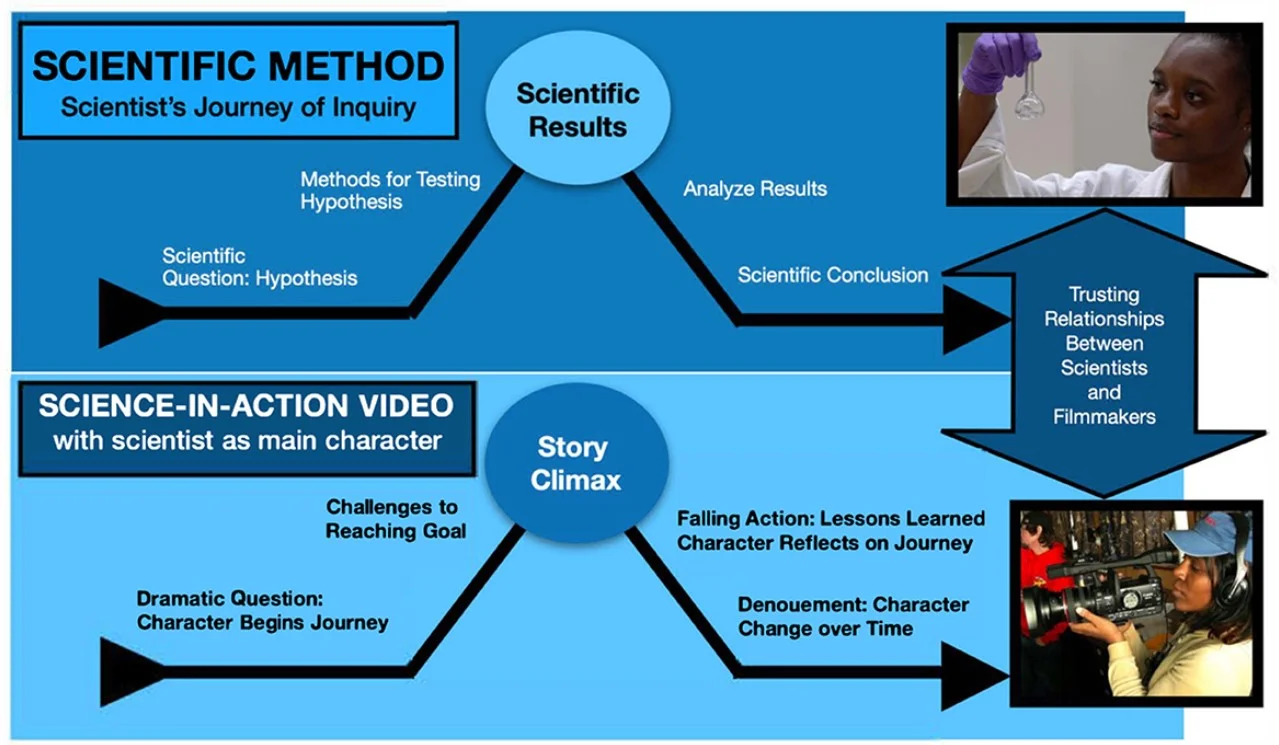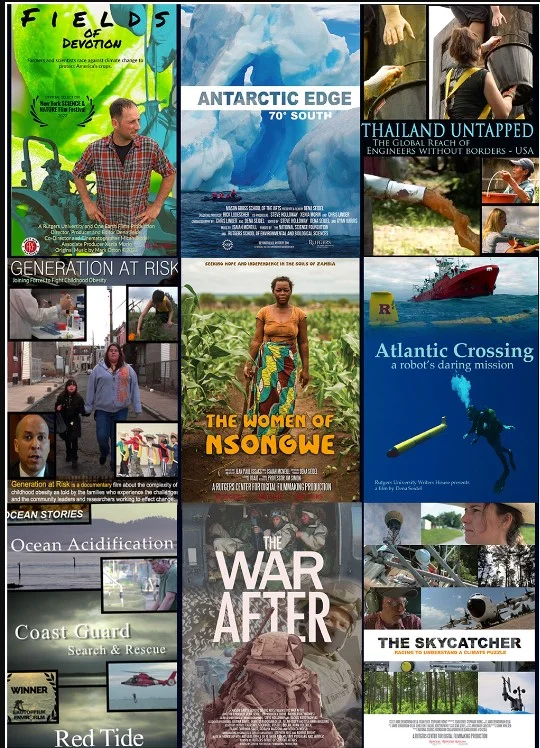Science in Action Films as the Blockbusters of SciComm
By Sarah Ferguson
Title: Building a collaborative, university-based science-in-action video storytelling model that translates science for public engagement and increases scientists’ relatability
Author(s) and Year: Seidel DK, Morin XK, Staffen M, Ludescher RD, Simon JE and Schofield O 2023
Journal: Frontiers in Communication (open access)
TL;DR: Science documentaries that increase scientists’ relatability also increase learning, interest, and engagement in audiences.
Why I chose this paper: I’m always interested in hearing about applied SciComm research and this paper did an excellent job of outlining the real-world techniques and choices made to create successful SciComm media!
How many of us grew up knowing a friendly neighborhood scientist? Someone who you knew did research that you also saw doing the same things you did, going to the same places you went, feeling the same things you felt? Someone you could relate to?
The answer is probably very few. (If you did grow up with an awesome scientist friend, I’m jealous!) The problem with not getting to see scientists out of the lab is that it reduces their relatability, and relatability can be a powerful tool in establishing trust, understanding, and interest.
A collaborative effort from scientists, science communicators, and filmmakers from Rutgers University has found a new way to increase scientists’ relatability while showcasing their research and time in the lab. A 2023 paper by Seidel et al. describes the group’s success with creating science documentaries that humanize scientists to make their work more relatable, an important first step in increasing public trust and engagement in science.
The Method
The group from Rutgers focused on “science in action” documentaries as a way to make scientists relatable and increase learning and engagement in audiences. These documentaries ( as outlined in Figure 1) showed the journey a scientist takes to go from initial research question and discovery. Science communicators, filmmakers, scientists, and undergraduate students worked together to produce nine documentaries (Figure 2.) featuring different areas of science research.

The authors note that the key to their collaboration was to first establish trust between participating scientists and storytellers. Unlike traditional documentaries where the filmmakers get the final word, this project assured the participating scientists that they would have the final say on how their science was presented. Additionally, it was agreed that the raw footage collected would be considered data and property of the scientists’ and the finished documentary was considered property of the storytellers. Establishing clear rules from the start helped scientists feel more comfortable engaging with the documentary projects.
After filming, which took anywhere from 1 month to multiple years, the storytellers would choose specific “scenes” that best told the narrative of science in action and edit together a documentary. After each documentary was fact-checked by their collaborating scientists, the filmmaking instructors worked with TV and online platforms to distribute the documentaries.
The authors then hired an evaluation firm to distribute pre- and post-viewing evaluations to documentary audiences to see how they were affected by the documentary. Additionally, undergraduate students who worked on the documentaries were also interviewed and given survey questions about their experience working on the project.
Undergraduate audiences from one of the documentaries were given a survey to evaluate the relatability of scientists after a film screening.

The Results
This project involved many different stakeholders, with unique benefits to each group.
Benefits to Audiences
Audiences did learn from watching these science in action documentaries. After watching a documentary on climate change research, the number of audience members who reported a clear understanding of climate change increased by 20%. Additionally, when asked to describe the scientists in the film, audiences routinely described the relatability of the scientists and how they work together to complete research. The evaluation firm described the film’s success as helping viewers “to better understand the process behind the work and the story behind why researchers are so committed to the work they do.”
Benefits to Storytellers
Students reported that working on the documentary projects increased their interest in science and made them feel capable of engaging in science, which they previously did not feel qualified to do. The students also began to see scientists as “normal” people that they could relate to and began to see science as a “people driven” endeavor that affects everyone. This new interest in science had real life impacts for the undergraduates as well. In informal follow ups, 8 of 10 contacted undergraduates went on to find careers in science communication or nonfiction storytelling.
Benefits to Scientists
Research has shown that more scientists want to engage with the public, but are often stalled by a lack of support from institutions, lack of confidence, or lack of time. This model of science outreach combats those three barriers to engage scientists with the public. In this model, the project was supported by multiple departments from the scientists’ home institution, Rutgers University. Scientists were filmed while doing their normal activities so they did not have to take time away from the lab to participate. Pairing scientists with filmmakers gave them an expert who could give them direction and feel confident on camera. Additionally, because these films were broadcast on platforms with millions of potential viewers, the scientists could reach a much greater audience and get a bigger return on outreach for time invested than if they attempted a science outreach talk on their own. The scientists also reported that they improved their science communication skills during filming and learned to use less jargon and become more relatable to audiences.
The Impact
By focusing on the personal journeys of scientists, the documentary project succeeded in making scientists more relatable to audiences and storytellers. In return, audiences and storytellers increased their learning, interest and belief in their own ability to engage with science – all of which are incredible achievements on the road to increasing trust and engagement with science and scientists. But not every science communicator needs to create a million dollar documentary to do so. The strategy of making science and scientists relatable, or humanizing them, can be adopted in many different forms of media or engagement. Focusing on creating relatability between science and your audience first and facts second could increase learning and engagement between science and audiences.
Edited by: Scout Barker, Kay McCallum
Cover image credit: Tima Miroshnichenko

